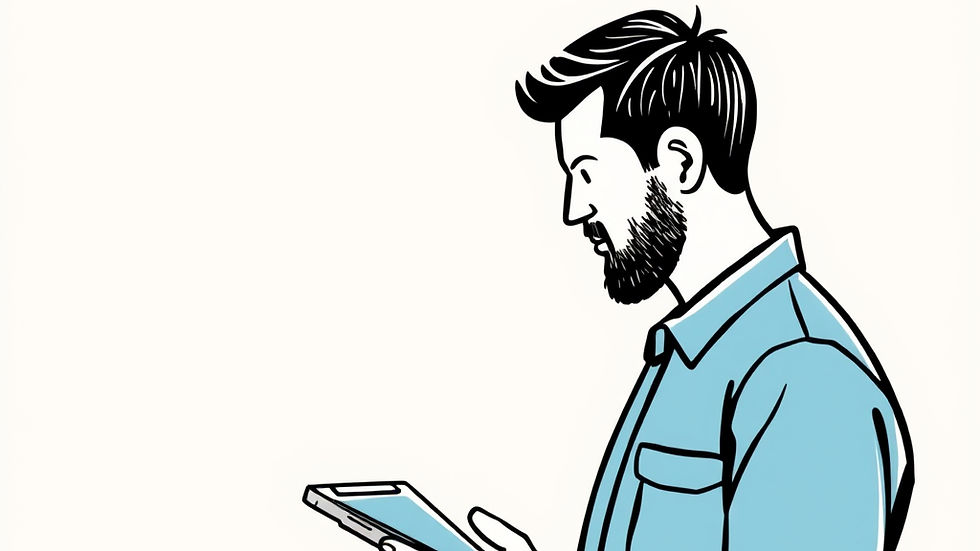The Meme Marketing Playbook: Leverage Viral Humor with Authenticity
- Thomas Walker
- Sep 3, 2025
- 3 min read
Memes have become much more than internet jokes. In 2025, they’re a serious marketing tool, blending humor, relatability, and shareability into content that travels faster and costs less than almost any other format. According to Sprout Social (2024), over 60% of consumers say they’re more likely to engage with brands that use humor on social media, and memes are one of the simplest ways to deliver that.
At Atlas MKT, we help brands use memes not as one-off gimmicks, but as part of a broader strategy that balances humor with authenticity. The result: relatable content that builds community, drives engagement, and humanises your brand.

Why Meme Marketing Works in 2025
The reason memes work is simple: they speak the language of the internet. They’re short, easy to consume, and instantly recognisable. A HubSpot survey (2024) found that 74% of social media users follow brands primarily for entertaining content. Memes meet this demand perfectly, blending lightheartedness with cultural relevance.
What makes memes particularly powerful is accessibility. Unlike high-budget ad campaigns, memes thrive on simplicity. That accessibility makes them shareable, relatable, and often more impactful than polished creative.
Atlas insight: memes aren’t just about laughs. They tap into cultural touchpoints that help audiences feel “in on the joke,” which builds an emotional connection that glossy ads can’t replicate.
The Role of AI in Meme Creation
AI has accelerated meme marketing. Tools like ChatGPT and MidJourney can now generate meme concepts and visuals in minutes, making it easy for brands to experiment quickly. But here’s the catch: AI alone doesn’t make memes effective.
According to GWI’s 2025 Marketing Trends Report, audiences can spot when brands misuse formats or jump on memes without cultural awareness. That’s why authenticity still matters. At Atlas MKT, we use AI as an assistant, not a replacement, it helps with speed and idea generation, but human creativity ensures the content lands authentically.
Authenticity Over Virality
One of the biggest risks in meme marketing is trying too hard to go viral. Memes flop when brands use trending formats without understanding their context. A Deloitte report (2024) revealed that 57% of Gen Z unfollow brands they feel are “cringe” or inauthentic online.
The lesson is clear: authenticity beats forced virality. A well-placed, on-brand meme that resonates with your audience is far more valuable than chasing every internet trend. For example, a fitness brand might lean into humor about gym struggles, while a finance app could poke fun at budgeting habits.

Memes as Community Builders
Memes aren’t just content, they’re community glue. When audiences share and engage with a brand’s memes, it creates a sense of belonging, an “inside joke” between brand and follower.
Research from Statista (2023) found that memes are one of the top three most shared content formats globally. Brands that lean into this see stronger engagement and even user-generated memes about their products. This type of grassroots participation isn’t just engagement, it’s free advocacy.
Atlas insight: memes turn audiences into co-creators. When people begin making memes about your brand, you know you’ve built something bigger than reach, you’ve built culture.
The ROI of Meme Marketing
One of the biggest advantages of meme marketing is cost-effectiveness. Unlike polished ad shoots, memes can be created quickly and inexpensively, but their potential reach is enormous. A ViralMoment 2024 report showed that meme-driven campaigns generated up to 60% higher organic reach compared to traditional branded content.
This means brands can achieve disproportionate ROI when memes are integrated into their content mix. They don’t replace performance campaigns, but they amplify them, making your paid ads feel more relatable and increasing brand visibility organically.
How to Use Meme Marketing Without Missing the Mark
The brands that succeed with memes in 2025 are those that integrate them into a larger content strategy. Memes should reinforce your brand voice, not replace it. They should feel like a natural extension of your messaging, not an opportunistic trend-grab.
At Atlas MKT, we help clients build “meme calendars” as part of their content systems, ensuring humor and relatability sit alongside blogs, paid ads, and email flows. This creates a balanced ecosystem of content that feels authentic while still driving measurable results. You can see similar approaches in our Portfolio.

Bringing Humor Into Your Strategy
Memes are more than jokes, they’re modern storytelling tools. When used strategically, they humanise your brand, build trust, and drive engagement at scale. The brands that get it right don’t just ride cultural waves, they create their own.
If you’re ready to explore how meme marketing can fit into your strategy, check out our Blog for more insights, view how we’ve built communities for clients in our Portfolio, or Book a Call with us today to make memes a high-ROI part of your marketing playbook.






Comments